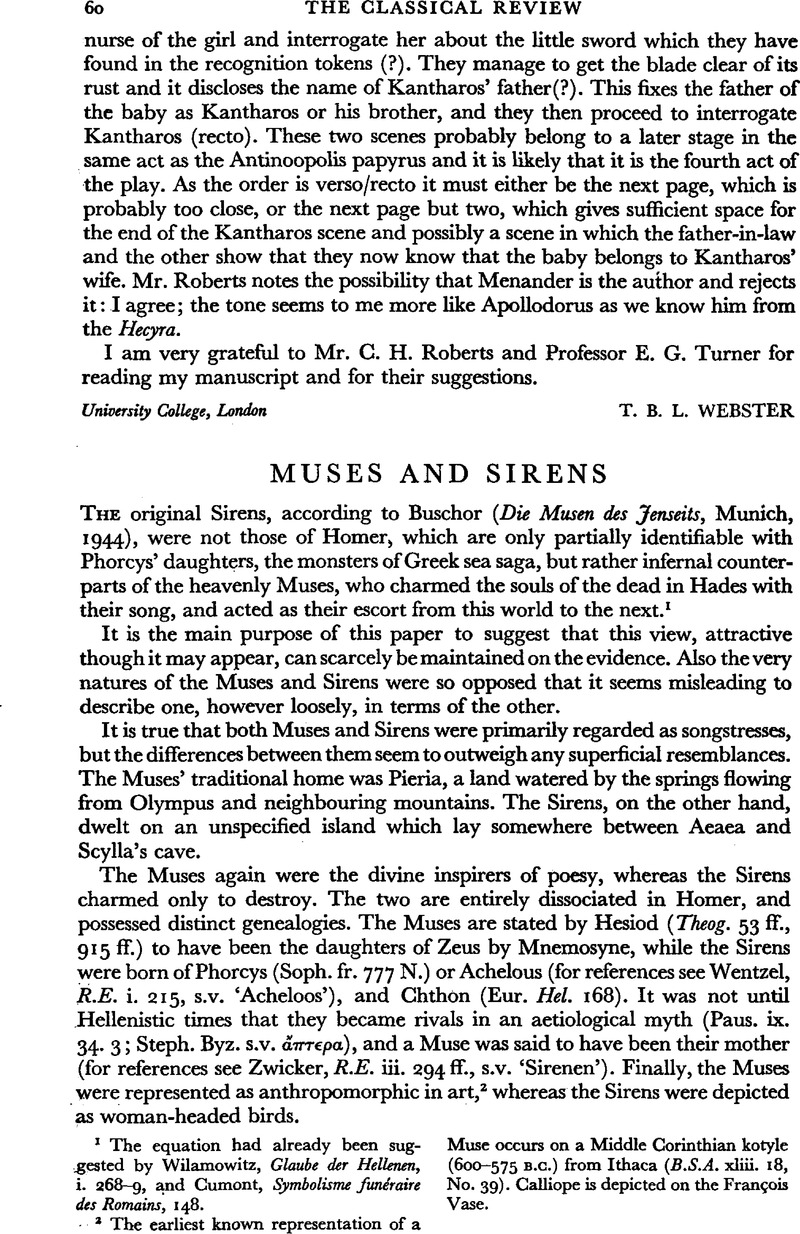Published online by Cambridge University Press: 13 February 2009

page 60 note 1 The equation had already been suggested by Wilamowitz, , Glaube der Hellenen, i. 268–269Google Scholar, and Cumont, , Symbolisme funéraire des Romains, 148.Google Scholar
page 60 note 2 The earliest known representation of a Muse occurs on a Middle Corinthian kotyle (600–575 B.C.) from Ithaca (B.S.A. xliii. 18, No. 39). Calliope is depicted on the François Vase.
page 61 note 1 The traditional view that Apollo possessed a northern origin is unproved, but has at least as much to recommend it as the theory that he reached Greece from Anatolia. See Rose, , Hist. of Greek Myth. 135 ff.Google Scholar; Guthrie, Orpheus 44 and note 20 to ch. iii.
page 61 note 2 For other examples see Zwicker, loc. cit.
page 62 note 1 A good modern account of these islands is given by Douglas, Norman, Sirenland, 42–43.Google Scholar
page 62 note 2 The frequent appeals to single Muses do not preclude the existence of others. See Stanford on Od. xxiv. 62.
page 62 note 3 Od. xxiv. 63, where, however, Stanford has suggested that the absence of the article may indicate an indefinite number.
page 62 note 4 e.g. ΙΜΕΡΟΠΑ on an Attic red-fig. stamnos (B.M. E. 440: Mon. dell' Inst. i, pl. 8; C.V.A. Lond., pi. 20. 1) and the Hellenistic names Thelxiope or Thelxinoe, Molpe, Aglaophonos, and Peisinoe. But Parthenope, Leukosia, and Ligeia appear to be of geographical origin. Cf. Weicker, op. cit. 65 and n. 2.
page 62 note 5 See E. Kunze, A.M. lvii. 135 ff.
page 63 note 1 The earliest known examples are roughly contemporary with the composition of the Odyssey. See Kunze, op. cit. 135, pl. v. 5.
page 63 note 2 For the Sirens as mortal ghosts, see Weicker, op. cit. 45.